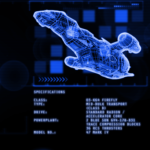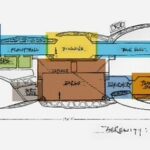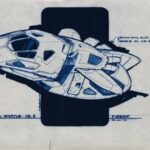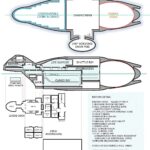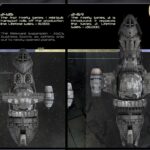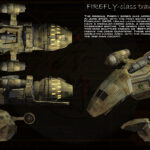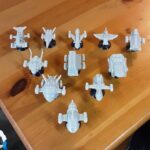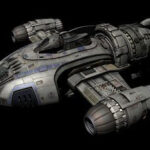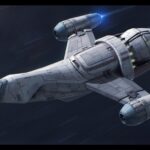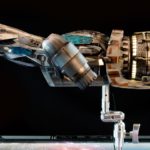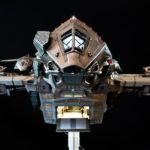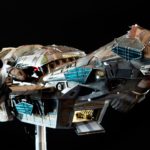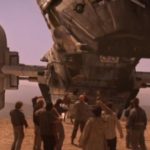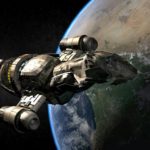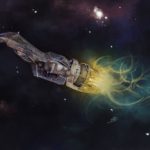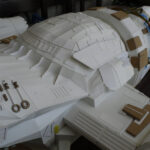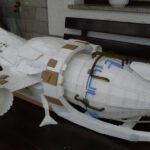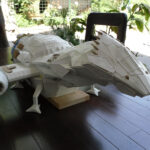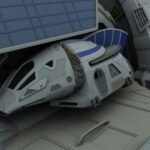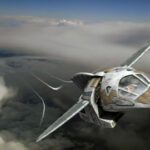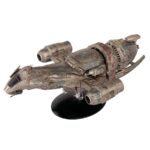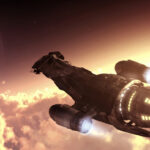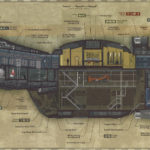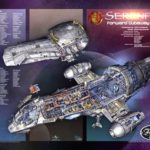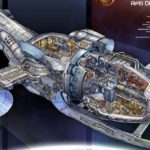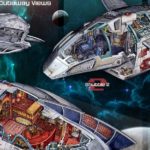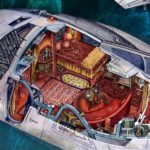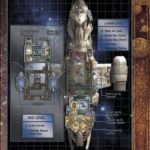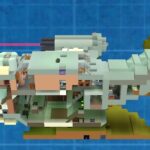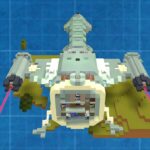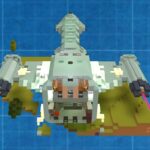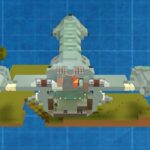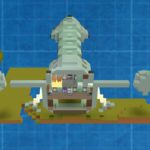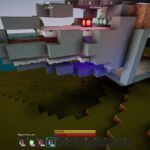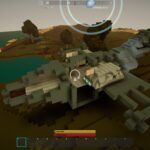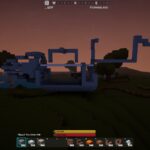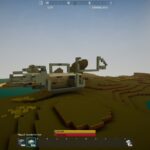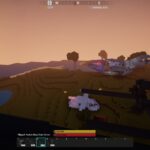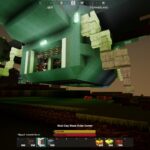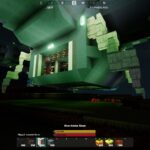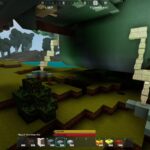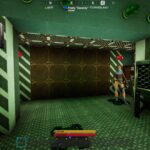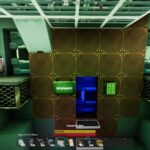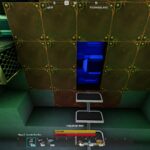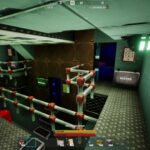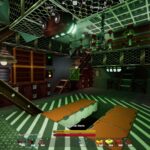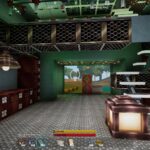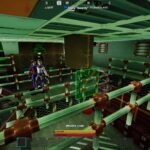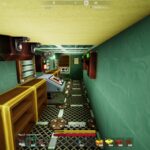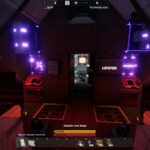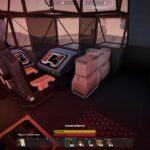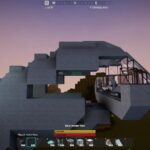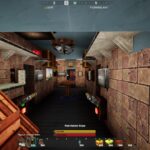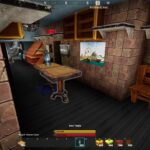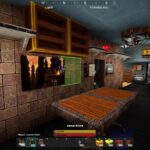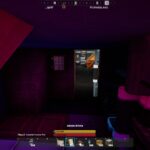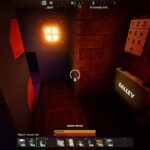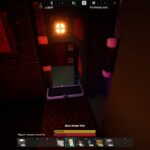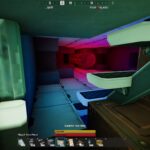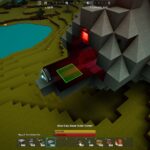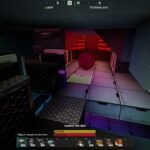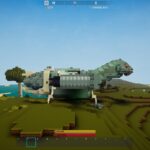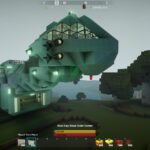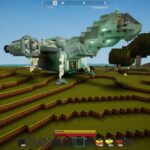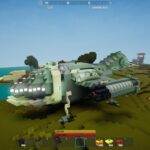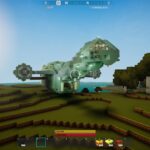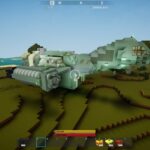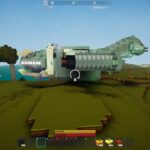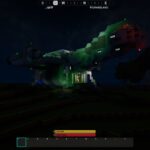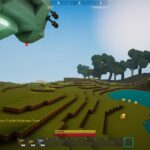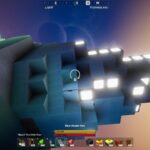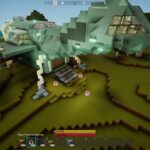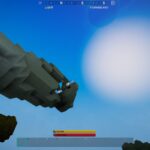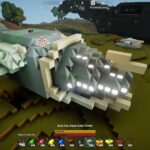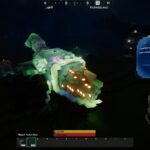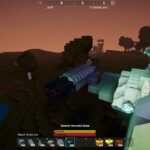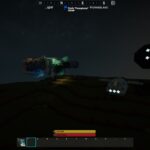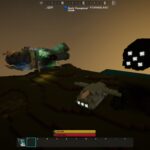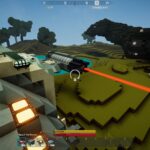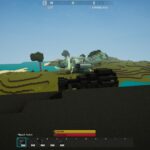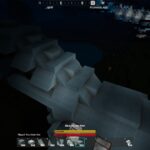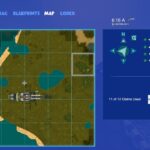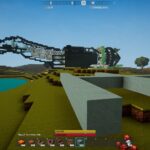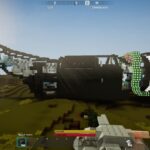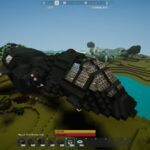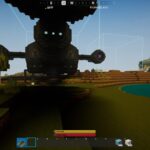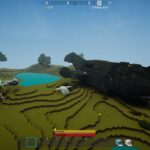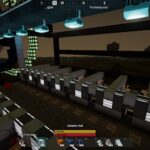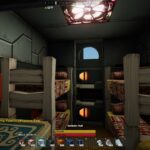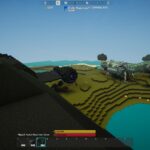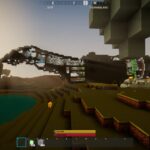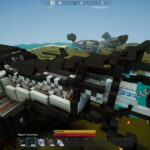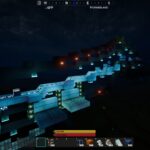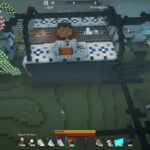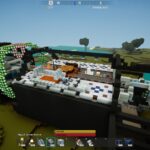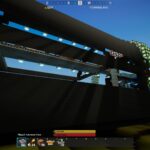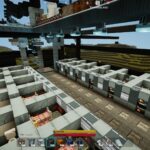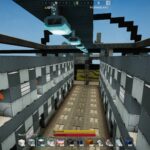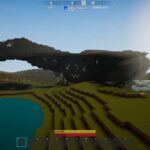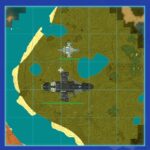You may know this famous type of Spaceship from its namesake TV show.
–
Table of Contents:
- Introduction
- Specifications
- Notes/Series
- Design (Images Begin)
- Models/Variants
- Exterior
- Cross-sections
- Lego Model
- Creativerse Model
–
Introduction:
‘Transports’ in this case indicates a capacity much like a typical cargo plane, public bus, or large taxi. The Firefly-class is a type of transport Spacecraft intended for dozens of people and up to 257.5 tons of hauled items. Of the many classes of transports and other ships, this one has become one of the most popular and romanticized.
–
Specifications:
| Type | Mid-bulk transport (Class A) |
| Drive | Enhanced graviton accelerator core |
| Powerplant | 4 Blue Sun EVT29-4000-A90 pulse-feedback generators 48 RCS thrusters |
| Manufacturer model no. | 95 Mark VII |
| Hull no. | M-7070-65 |
| Ship length | 378′-8″* |
| Ship width | 204′-2″* |
| Ship height | 92′-6″* |
| Hull | L 374′-0″ × W 97′-10″ × H 88′-11″ |
| Wingspan | 142′-6″ (to engine mounts) |
| Main engine dimensions | L 75′-0″ × W 33′-7″ × H 33′-7″ |
| Empty weight | 350,000 lbs. |
| Maximum weight | 865,000 lbs. (more than an Antonov AN-225) |
| Maximum payload | 325,000 lbs. |
| Crew capacity | 15 (8 cabins, 1 dorm) |
| Passenger capacity | 36 (6 staterooms, 12 berths) |
| Acceleration | 5.5 G |
| Range | 750 A.U. (max fuel) 120 A.U. (max. payload) |
| Carried vessels | 2 Endo/Exo-Atmospheric Shuttles 10 Emergency life pods 2 MF-950 Flying Mules(extended cab) |
| Other equipment | 4 Magnetic grappler launchers 10 Self-powered transmitter buoys |
*The dimensions listed above are for the largest model/subtype of Firefly; normally these ships are ~100′ shorter, with a shorter wingspan, and stand only ~7 stories tall (with their 2-story landing-gear deployed).
Mal‘s Firefly was reportedly only ~191’ from nose to tail, for example; ~2x shorter, thus ~7.7x less voluminous/weighty.
191’D x 104’W x 47’H = 933,608 ft^3 (volume of rectangular-prism occupied by ship; not actual volume of ship material)
compared to: 379’D x 204’W x 93’H = 7,190,388 ft^3
(That means Mal’s Firefly may only have weighed 45,445 lbs. empty; ~23 tons, which is comparable to a Douglas DC-6 airliner / cargo-airplane.)
The estimated-shortest Firefly sub-type (built based on a flythrough computer-model of the show-Firefly, which showed it as somewhat more-compact than that 191′ version) was built as a computer-model in Creativerse, measuring 144′ from nose to tail.
–
Notes:
The Firefly-class transport ship is a series of Multipurpose, Mid-Bulk Transport boats designed by Allied Spacecraft Corporation. The hulls and engines are constructed at ASC’s shipyard at New Burbank, Osiris, with final outfitting being outsourced to a dozen smaller companies, including the newly formed Firefly Ship Works on Hera.
All “Firefly”s feature a large rear engine module, wing-mounted engines capable of vertical takeoff and landing (VTOL), a centralized cargo section, and raised forward section holding the crew quarters and bridge.
Series 1:
The original Firefly series was approved for production in June 2434, with the first boats being completed in February 2435. Unlike later designs, the Series 1 did not have a modular cargo area, a secondary cargo area, or passenger berths. The design can dock a pair of optional two-man shuttles known as “Beetles” on the dorsal neck (above the crew quarters). These small craft have no dedicated cargo area, with the passenger sitting behind the one-man cockpit.
8,000 Series 1 boats were sold over the next twelve years before production was halted to make way for the Series 2 design.
Series 2:
The Firefly Series 2 was approved for production in March 2447, with the first boats available for sale in 2448. The Series 2 was larger and more streamlined than the Series 1, adding a secondary cargo area (aft of the main cargo section) which could be outfitted with passenger berths.
The Series 2 also replaced the bulky engines used on the Series 1 with the all new Capissen 38 Mark II. The Capissen engines were a significant improvement in performance—doubling the ships top speed, while at the same time halving fuel consumption. Unfortunately, the new design was also more complicated and temperamental, leading to a notably higher failure rate over time. Despite the reliability issues, if properly maintained, the ship is amazingly maneuverable, and can still be found on the stunt circuit.
Only 5,000 Series 2 boats were sold, before production was halted to make way for the Series 3 design.
Series 3:
The Firefly Series 3 was produced in multiple versions. The standard version was the 03-K64-Firefly produced for the civilian market. A Military Version—with multiple gun emplacements and wing mounted missiles—was approved for production in August 2463. Used during the Unification War, they were decimated by the Alliance Fast Attack Ship.
The Series 3 featured a number of improvements over the earlier models, notably the extenders below the wings of the ship to stabilize the rotating VTOL engines, and hold them further from the main body of the craft (which keeps the ship from shaking as much as previous series, and allowed for shuttle bays to be built into the sides of design above the wings). Also, the Series 3 is longer, with an extended ‘neck’, and generally roomier interior. It again uses the more reliable Trace Compression Block engine, rather than the Gurstler engine used in some other designs.
The VTOL engines are normally rotated to provide vertical or forward thrust but have a 270° range of motion. The exhaust can be pointed forward to provide reverse thrust. While not their normal operation, safeties can be disabled to enable each engine to be rotated independently, allowing for tighter turns than is possible with most propulsion systems.
No longer in production, 28,000 Series 3 boats were sold over the designs production lifetime.
Series 4:
The Firefly Series 4 was approved for production in January 2513, with availability projected for July 16, 2513. The Series 4 is 25% faster than the Series 3, and has twice the range. The main hull is significantly wider than a Series 3, with two side-by-side main cargo bays in the main section. Aft of this section the secondary cargo area is also larger accommodating proper passenger staterooms, or a larger number of berths. The boat also has room for twice the crew of a Series 3.
The larger amount of crew space has allowed for the addition of a dedicated land vehicle bay, a cargo elevator, and a small hydroponics garden. The main cargo section is modular, and can be adapted to pick up and drop off standard cargo modules without anyone entering the cargo bay itself.
With the increased size and capability comes a higher price tag, primarily for operating expenses. The increased cargo / passenger area is necessary to take jobs to maintain upkeep on a Series 4. This type is primarily used on the lucrative routes between the Core and the Border. For captains traveling the Rim and more interested in economy of operation, the Series 3 remains the better option.
Further details here.
…
2023 September adds:
Like most human Spacecraft in this area and era, they are capable of reaching adjacent stars within a week or two, adjacent worlds within a day or less, and the moon of a planet (or vice versa) within the hour.
Like most craft which do not have Grey or Inisfreean technology, when “going planet-side” (entering an atmosphere and descending to the given world’s outer surface) they still need at least a quarter hour, and sometimes half an hour or more, to make an airplane-like flightpath/descent.
While the TV show mentioned they have a lot of “troublesome nooks” (unused spaces in their structure, in which illegal items or people can be hidden), quite a lot of the spacecraft any/everywhere have some of those.
–
Design:
This is the later-model featured in the TV show.
–
Models/Variants:
–
Exterior:
This is the later-model featured in the TV show.
–
Cross-sections:
This is the later-model featured in the TV show.
–
Lego Model:
This is the later-model featured in the TV show.
–
Creativerse Model
Blueprint / Cross-sections:
This is the later-model featured in the TV show.
Forming:
Airlock:
Hangar:
Airlock Control:
Cockpit:
Galley:
Nexus Rear:
–
Engine:
Gravity Drive:
Exterior:
Views of Firefly “Persephone” in Progress:
This is my customized version of the normal/largest model mentioned in the lore/wiki.
Comparison:
This shows how my custom Firefly based on the normal/large model of this class of Spacecraft compares to the Firefly featured in the TV show.
The green lines in this final image show how Persephone is a Firefly ~2.5 times longer along all dimension-axes than Serenity; 2.5 x 2.5 x 2.5 = 15.625 times more voluminous than Serenity.
–
